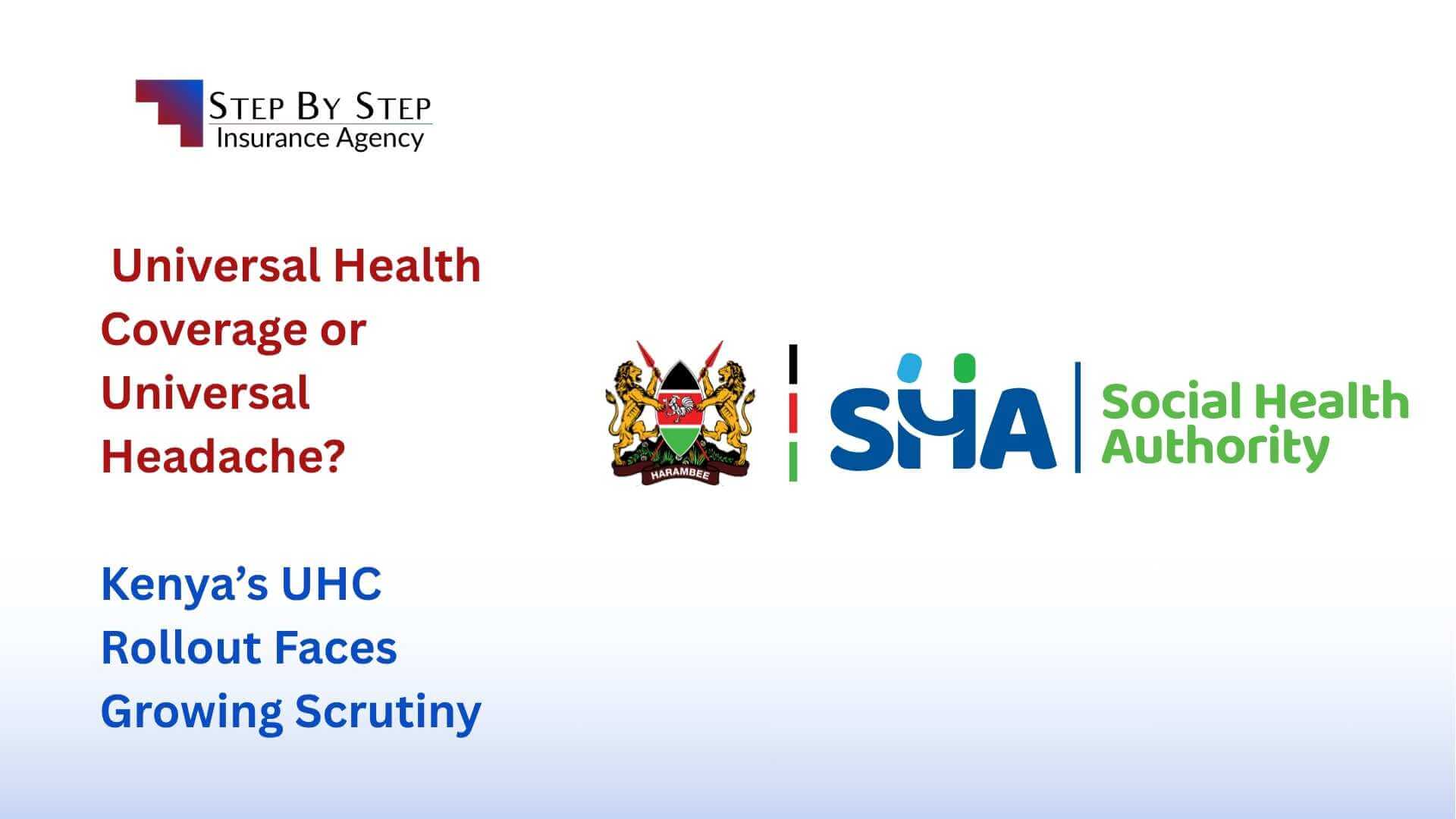Universal Health Coverage or Universal Headache? Kenya’s UHC Rollout Faces Growing Scrutiny
As Kenya rolls out its ambitious Universal Health Coverage (UHC) reforms, the promise of equitable healthcare for all is colliding with public skepticism, policy confusion, and echoes of past failures. While the government touts UHC as a transformative leap toward inclusive health access, many Kenyans are asking: is this truly progress, or just a repackaged version of the NHIF system that left so many behind?
Key Takeaways
- UHC Reform Promise: Kenya’s Universal Health Coverage aims to provide equitable healthcare access through the Social Health Authority (SHA)
- Public Skepticism: Many view UHC as potentially repeating NHIF’s structural flaws and management issues
- Critical Concerns: Unclear contribution models, limited benefit clarity, and administrative opacity remain major challenges
- Demonstrations: Civil society groups demand transparency, independent audits, and public participation in policy design
- Success Requirements: Transparent communication, stakeholder engagement, and robust accountability mechanisms are essential
Table of Contents
Join Our Insurance Community
Stay updated with the latest insurance trends, UHC developments, and healthcare policy insights. Connect with like-minded individuals passionate about Kenya’s healthcare transformation!
Join WhatsApp GroupThe Promise of UHC
Universal Health Coverage is designed to ensure that every Kenyan can access essential health services without financial hardship. Under the stewardship of the Social Health Authority (SHA), the new framework aims to streamline contributions, expand benefits, and reduce out-of-pocket costs.
The government’s messaging has been clear: UHC is not just a policy—it’s a moral imperative. Officials have emphasized its role in achieving Vision 2030 goals, reducing poverty, and improving national productivity. But as the rollout gains momentum, the gap between aspiration and execution is becoming harder to ignore.
Public Concerns & Criticism
For many, the UHC rollout feels eerily familiar. Critics argue that the new system mirrors the structural flaws of the National Health Insurance Fund (NHIF), which was plagued by mismanagement, corruption scandals, and inconsistent service delivery.
Major Concerns Include:
- Unclear contribution models for informal sector workers
- Limited benefit clarity, especially for chronic illnesses and specialized care
- Administrative opacity, with little public engagement on how funds will be managed
Healthcare workers have also voiced frustration over delayed payments, understaffed facilities, and unrealistic expectations placed on frontline providers.
Demonstrations & Petitions
In recent weeks, civil society groups, professional associations, and concerned citizens have taken to the streets and online platforms to demand a more inclusive and transparent approach. Petitions circulating on social media call for:
- Independent audits of SHA operations
- Public participation in policy design
- Safeguards against political interference and misuse of funds
These demonstrations reflect a growing sentiment: health reform must be co-created with the people it’s meant to serve.
What’s at Stake
If implemented poorly, UHC risks deepening public mistrust and exacerbating inequalities. But if done right, it could redefine Kenya’s healthcare landscape—unlocking access, improving outcomes, and restoring faith in public institutions.
The Stakes are High:
- For patients: timely, affordable care
- For providers: fair compensation and support
- For policymakers: a legacy of reform or a repeat of failure
| Get Expert Insurance Guidance | |
|---|---|
| Request Consultation | Contact Us Online |
| Call Us |
+254 (0) 729 712 200 +254 (0) 716 534 192 |
| 0722 888 350 | |
| Get Quote | Request Insurance Quote |
The Way Forward
Kenya’s UHC journey is far from over. To succeed, the government must prioritize:
- Transparent communication about benefits and costs
- Robust stakeholder engagement, especially with marginalized communities
- Accountability mechanisms to prevent misuse and ensure sustainability
Health is not just a service—it’s a right. And rights must be protected, not just promised.






